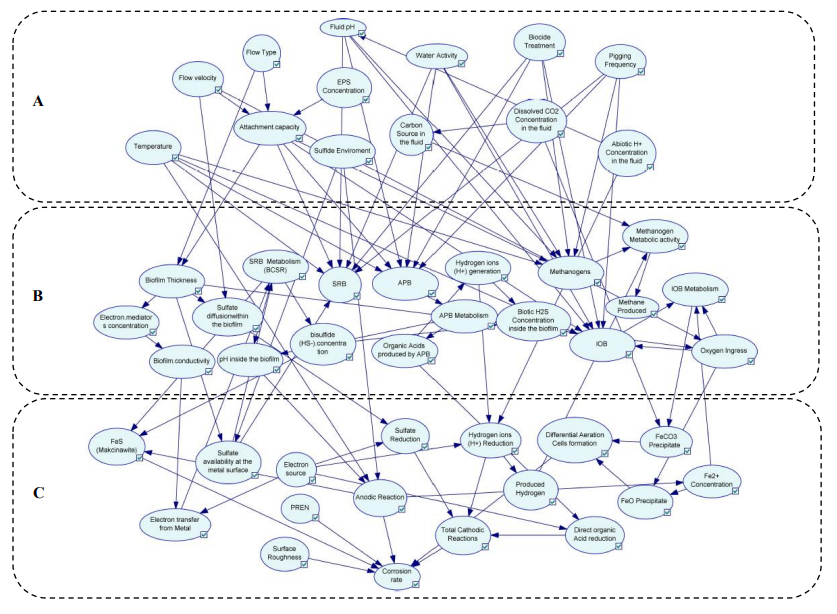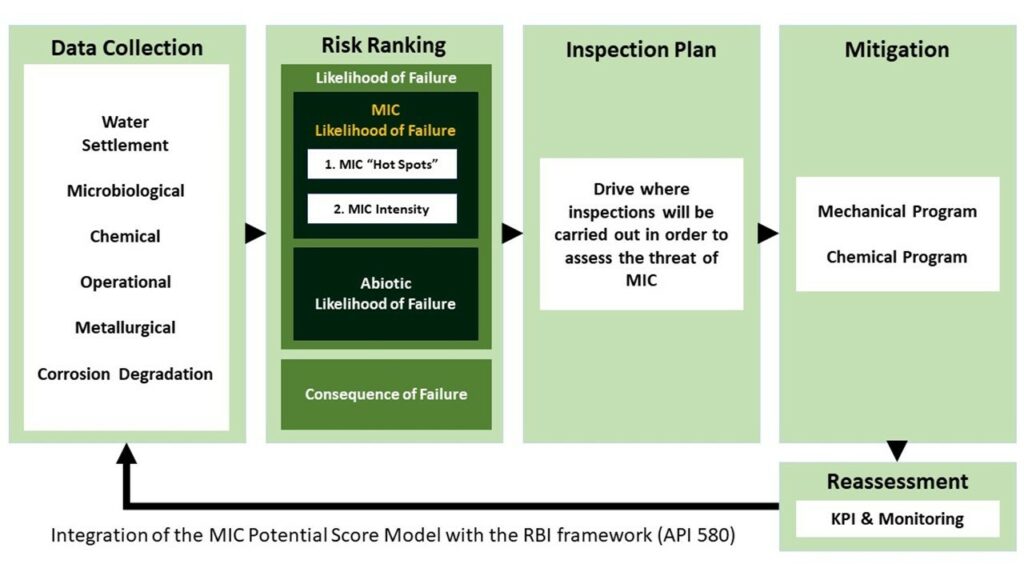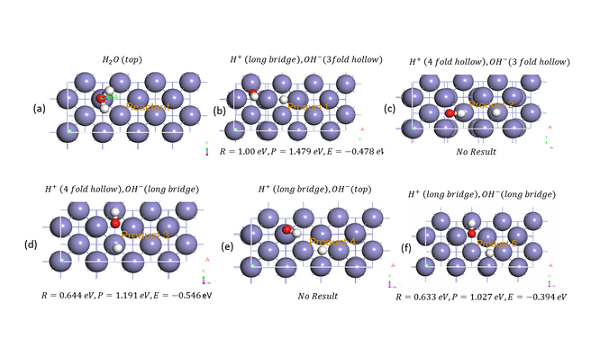Graduate Student and Postdoctoral Fellow Projects related to devising better predictive modeling and risk assessment tools
A mechanistic and a probabilistic model for predicting and analyzing microbiologically influenced corrosion
Abdul-Waris Dawuda, Memorial University
Supervisor: Dr. Faisal Khan, Memorial University
The complexities inherent in Microbiologically Influenced Corrosion (MIC) requires a thorough understanding of the mechanisms involved when attempting to predict its rate. Even though mechanistic models have been developed in recent MIC studies, these models rarely analyze factors influencing pit depth and corrosion rate predictions. The objective of this work is to improve MIC prediction by quantitatively analyzed the factors influencing the predicted pit depth and corrosion rates. Therefore, this work presents a mechanistic and a probabilistic model which predicts corrosion rates, pit depth propagation, and analyzing influential factors in a MIC process. The mechanistic approach presents a model based on the direct contact extracellular electron transfer mechanism and nutrient limitation for microbial metabolism. The mechanistic model investigates the impact of redox intermediaries embedded in the cell structure of electroactive biofilms on corrosion rates. The mechanistic model also analyzes the effect of biofilm thickness limiting nutrient availability for corrosive microbiological organisms. The probabilistic approach presents a Bayesian network model which predicts the maximum corrosion rate in a process system. The probabilistic model analyzes the most critical factors affecting the corrosion rate predicted using Importance and Sensitivity analysis. The predictions obtained by both models were consistent with MIC rates in case studies and experimental studies. We also discovered that redox properties of electroactive biofilms pose a significant threat to asset integrity as opposed to corrosion caused by sulfate reduction in the case of Sulfate Reducing Bacteria (SRB).
Abdul-Waris completed his Master of Engineering thesis in October 2019. Read his thesis.

Bayesian Networks developed from the factors and mechanisms influencing MIC. Factors are categorized under A) Fluid and operating conditions. B) Biofilm and Bacteria Metabolism C) Metal Surface and MIC propagation. Image credit: Abdul-Waris Dawuda, Memorial University

Modeling of MIC for Risk-Based Inspection (RBI) in the Oil and Gas Industry
Andre Abilio, University of Alberta
Supervisor: Dr. John Wolodko, University of Alberta
Co-Supervisor: Dr. Torben L. Skovhus, VIA University College
Collaborators: Rick Eckert, DNV GL
Development of a data driven prediction model to assess the potential of the threat of microbiologically influenced corrosion (MIC) in oil and gas facilities based on the input of operational, chemical and biological parameters. The model is a MIC dedicated semi-quantitative susceptibility score that aims to assist operators on prioritizing and driving where inspections shall be carried out and thus develop tailored inspection programs to prevent and mitigate MIC. This two-step risk-based inspection (RBI) related approach is divided into a screening assessment and a ranking tool and relies on molecular microbiological methods (MMM) to assess microbiological activity, diversity and abundance.
Study of the dissociation of water molecule at iron surface in presence of sulfur using first principles
Mohammad Asif, Memorial University
Supervisor: Dr. Faisal Khan, Memorial University
The water molecule, based on adsorption energies, at the top site dissociate into and at the iron surface. The matter of debate is to find out the position of and
at iron surface for water dissociation by searching for a transition state. Many routes are possible for dissociation depending on the final configuration of the product. We examined many product sites, out of which five relevant configurations for splitting of water molecule into hydrogen ion and hydroxyl ion at various sites are shown in above figure.

Optimized geometries for reactant (a) and products (b-g) for dissociation of water. The various sites are depicted above the picture and energy barrier for reactant (R), Energy barrier for product (P), energy of reaction (E) are depicted below the picture. The elements are represented by their usual symbols.. Image credit: Mohammad Asif, Memorial University

Terra Nova FPSO. Image source www.kbr.com.
Dynamic risk-based modeling of MIC induced failures in offshore operations
Sidum Adumene, Memorial University
Supervisor: Dr. Faisal Khan, Memorial University
Offshore oil and gas systems in the marine environment face a high degree of microbial corrosion-related damage due to the dynamic environment and operational factors. The interaction among the monitoring operating parameters, material composition, environmental factors, and the microbial activities enhance the MIC formation and its propagation. The risk-based model captures the complex interactions among these corrosion influencing parameters under multispecies biofilms to predict the offshore system susceptibility rate (corrosion rate), the likelihood of failure, critical failure time, and the associated consequences. The integrated Bayesian Network (BN)-Markovian model provides a dynamic failure prediction/diagnostic tool upon the initiation of microbial corrosion under diverse operational scenarios.
